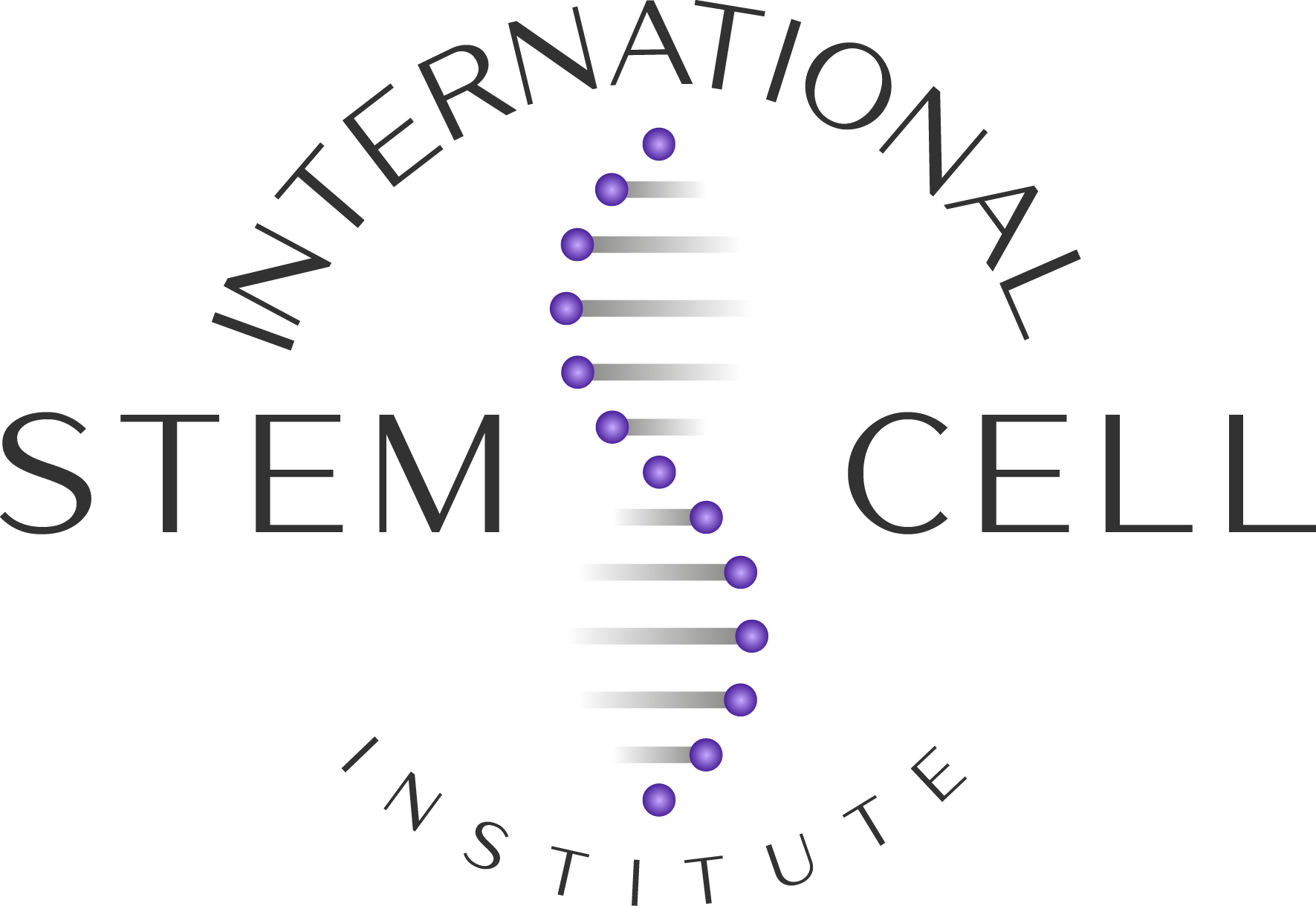Autism
Four disorders fall under the heading of autism spectrum disorder (ASD): autism (also referred to as classical autism), Asperger’s syndrome, childhood disintegrative disorder (CDD), and pervasive developmental disorders (PDD) not otherwise specified.
Stem cell therapy is a novel and effective approach to the treatment of ASDs based on the unique ability of stem cells to influence metabolism and the immune system and to restore damaged cells and tissues.

The UCMSCs used by the International Stem Cell Institute® to treat ASD positively impact all of the body’s organs and systems, starting with the brain. This is extremely important because, with ASD, the brain areas regulating memory, concentration, attention, speech, and so on are damaged. Our treatment results in better blood and oxygen flow to the brain, called “improved perfusion,” better replacement of damaged neurons, and better formation of new arteries.
- This leads to improved intellectual capacity
- These improvements varies from child to child
After a certain period, UCMSCs acquire the properties of the surrounding cells and differentiate into them. This leads to restoring white and gray matter and, consequently, to subsiding neurological symptoms and improved intellectual capacity. As impaired or lost neuron connections are restored, new neuron connections form and brain reactions accelerate because synaptic transmission improves.
Improvements in autistic children that can be expected after stem cell therapy:
- Better tolerance for different foods and improved digestion. Some children begin to try new foods and like them.
- Easier contact with the child, starting with eye contact. Children who did not fix their gaze at objects begin looking at them with interest.
- Adequate behavior at home and outside.
- Reduced or loss of fear of loud noises, strangers, and bright colors. This improvement is gradual.
- Improved verbal skills. If the child is non-verbal, it is very likely to start making sounds, produce syllables and eventually pronounce words. Verbal children are likely to expand their vocabulary.
- Development or improvement of writing skills.
- Improved self-care skills.
- More sustained attention span and concentration.
Although the degree of these improvements varies from child to child, they have been reported in all cases. One of the main goals of stem cell therapy at the International Stem Cell Institute® is to trigger brain development and prepare children for adult life by developing the skills they need the most: communication, self-care, learning, and professional skills.
Stem cell therapy is an effective and safe method for treating autism that can help your children with autism and autism spectrum disorders of different degrees. The earlier the treatment starts, the better the results you can expect. Stem cell therapy is a powerful engine, but the best results are reported with proper parental care, diet, educational programs, and other therapies.
Contrary to other Stem Cell treatments based on autologous transplant, where the stem cells are as old as the patient’s age and carry all the information accumulated through their life, at the International Stem Cell Institute®, we use donor umbilical cord-derived mesenchymal stem cells (MSCs) instead of bone marrow or fat tissue-derived. In our laboratory, umbilical cord MSCs can undergo approximately twice the number of “doublings” as their adult-derived bone marrow or fat tissue counterparts. The overall hypothesis is that UCMS cells possess immune properties that would be permissive to allogeneic transplantation. For example, UCMS cells will suppress the proliferation of “stimulated” lymphocytes (immune suppression) and have reduced immunogenicity (e.g., would be poor stimulators of allogeneic lymphocyte proliferation).
Mesenchymal stem cells are progenitors for several connective tissue cell lineages, including bone, cartilage, muscle, fat, and bone marrow. As mesenchymal stem cells can target diseased organs, they may hold potential as vehicles capable of expressing and secreting proteins with therapeutic effects. These conditions are ailments and disorders in muscles, ligaments, and joints. Common examples include Rheumatoid Arthritis, degenerative disc disease, osteoarthritis, and various injuries like fractures and torn cartilage.
International Stem Cell Institute® Stem Cell Procedures
Help overcome these conditions by extracting stem cells from the umbilical cord, then concentrating and culture the cells and injecting them into the damaged area to help the body heal naturally. Our Stem Cell Procedures can be used for a wide range of conditions and are the tool of choice for injuries, arthritis, and other conditions that may be more significant than those treated with conventional therapies. According to our research, stem cells have self-renewal qualities which aid in reproducing cartilage and bone tissue cells, restoring joint function, and reducing pain. Scientists have discovered that stem cells and specifically allogeneic umbilical cord mesenchymal stem cells, are home to inflamed tissue and start producing anti-inflammatory agents. Usually, these cells are harvested from human umbilical cords donated after normal healthy births. This means that stem cell transplants could be used to treat some of the most common osteoarticular symptoms.
- Everything about your International Stem Cell Institute® experience is designed for results.
- At the International Stem Cell Institute®, our priority is to produce the best possible outcomes for our patients.
- And while our protocol is far more complex than you will find at other regenerative medicine clinics, we do not cut corners.
The injection typically takes place three weeks after the UCMSCs are extracted from the umbilical cord. During this time, cells are grown for approximately 15 days and then tested for quality assurance, including sterility testing and karyotype analysis to ensure no genetic abnormalities present in the stem cells. Once the UCMSCs have passed all safety and quality testing, you will be scheduled for the injection procedure. During the injection, the cultured cells are thoroughly tested for quality assurance and injected using guided imaging to ensure the most precise placement of cells into the injured area.
Discover the groundbreaking findings that illuminate the potential of stem cells in addressing autism spectrum disorders. Your journey towards understanding innovative solutions for autism begins with knowledge.
Als
ALS means Amyotrophic Lateral Sclerosis and it is an incurable disease. The average life expectancy from diagnosis is 2 – 5 years.
ALS or the “Lou Gehrig’s Disease“ is a progressive neurodegenerative disease that affects nerve cells in the brain as well as the spinal cord. It especially refers to the degeneration of the so called motor neurons that reach from the brain to the spinal cord and from there to the muscles. Through ALS these motor neurons die and with that the ability of the brain to initiate and control muscle movement.

Our treatment basically concentrates on the reduction of symptoms. It wants to slow down the chronic consequences of ALS for the sake of each patient’s quality of life. Stem cell therapy is an effective and safe method for treating ALS.
- The earlier the treatment is started better
- The real effectiveness of the stem cell treatment
The earlier the treatment is started, the better the results that you can expect. Through years of research and therapeutic practice, International Stem Cell Institute® discovered the possibility that stem cell implantation treatment not only can effectively increase the number of brain nerve cells, but also is able to start the re-development of the neurological process. Stem cell therapy is a very powerful engine, but the best results are reported in combination with proper diet, nutritional supplementation, educational programs, and other therapies.
To make stem cells work efficiently after implantation, the doctors at the International Stem Cell Institute® must be familiar with the cells’ characteristics, use complicated medical technology to regulate and monitor the cells’ growth and work in vivo, use the proper mediation for assistance and use physical rehabilitation training designed according to the instructions of the clinical index. The strict clinical cells regulations will guarantee the real effectiveness of the stem cell treatment, while from past experience, the pure stem cell implantation without cell control treatment could not achieve ideal treatment outcomes, since the existence of the pathology environment, neither the patient’s own motor neurons nor the implanted stem cells (or the neural precursor cells) did not allow the stem cells to survive.
Contrary to other Stem Cell treatments based on autologous transplant, where the stem cells are as old as the patient’s age and carry all the information accumulated through their life, at the International Stem Cell Institute®, we use donor umbilical cord-derived mesenchymal stem cells (MSCs) instead of bone marrow or fat tissue-derived. In our laboratory, umbilical cord MSCs can undergo approximately twice the number of “doublings” as their adult-derived bone marrow or fat tissue counterparts. The overall hypothesis is that UCMS cells possess immune properties that would be permissive to allogeneic transplantation. For example, UCMS cells will suppress the proliferation of “stimulated” lymphocytes (immune suppression) and have reduced immunogenicity (e.g., would be poor stimulators of allogeneic lymphocyte proliferation).
Mesenchymal stem cells are progenitors for several connective tissue cell lineages, including bone, cartilage, muscle, fat, and bone marrow. As mesenchymal stem cells can target diseased organs, they may hold potential as vehicles capable of expressing and secreting proteins with therapeutic effects. These conditions are ailments and disorders in muscles, ligaments, and joints. Common examples include Rheumatoid Arthritis, degenerative disc disease, osteoarthritis, and various injuries like fractures and torn cartilage.
International Stem Cell Institute® Stem Cell Procedures
Help overcome these conditions by extracting stem cells from the umbilical cord, then concentrating and culture the cells and injecting them into the damaged area to help the body heal naturally. Our Stem Cell Procedures can be used for a wide range of conditions and are the tool of choice for injuries, arthritis, and other conditions that may be more significant than those treated with conventional therapies. According to our research, stem cells have self-renewal qualities which aid in reproducing cartilage and bone tissue cells, restoring joint function, and reducing pain. Scientists have discovered that stem cells and specifically allogeneic umbilical cord mesenchymal stem cells, are home to inflamed tissue and start producing anti-inflammatory agents. Usually, these cells are harvested from human umbilical cords donated after normal healthy births. This means that stem cell transplants could be used to treat some of the most common osteoarticular symptoms.
- Everything about your International Stem Cell Institute® experience is designed for results.
- At the International Stem Cell Institute®, our priority is to produce the best possible outcomes for our patients.
- And while our protocol is far more complex than you will find at other regenerative medicine clinics, we do not cut corners.
The injection typically takes place three weeks after the UCMSCs are extracted from the umbilical cord. During this time, cells are grown for approximately 15 days and then tested for quality assurance, including sterility testing and karyotype analysis to ensure no genetic abnormalities present in the stem cells. Once the UCMSCs have passed all safety and quality testing, you will be scheduled for the injection procedure. During the injection, the cultured cells are thoroughly tested for quality assurance and injected using guided imaging to ensure the most precise placement of cells into the injured area.
Our approach improves quality of life, delays aging, and prevents diseases.
Long COVID Effects on the Brain
Long COVID, a condition characterized by lingering symptoms after recovering from the initial COVID-19 infection, has been a subject of growing concern globally. A significant number of Long COVID patients report neurological symptoms, including cognitive impairment (often referred to as “brain fog”), headaches, sleep disturbances, and a loss of taste and smell. These symptoms are not just distressing but can severely impact the quality of life.

Statistics and Research Findings
Recent studies indicate a startling prevalence of neurological symptoms in Long COVID patients. In the United States, an estimated [insert latest statistics] people have reported experiencing prolonged neurological issues post-COVID-19 recovery. Research published in [insert reputable journal name] found that MSCWJ therapy shows promise in addressing these neurological effects.
The Role of MSCWJ in Treating Long COVID Neurological Symptoms
Mesenchymal Stem Cells from Wharton’s Jelly (MSCWJ) offer a beacon of hope in this scenario. These cells, known for their anti-inflammatory, immunomodulatory, and regenerative properties, could potentially help repair the neurological damage caused by COVID-19. MSCWJ therapy aims to reduce inflammation in the brain and promote the regeneration of affected neural tissues.
Dr. Leonardo Gonzalez’s Pioneering Approach
Dr. Leonardo Gonzalez, a leading figure in regenerative medicine, is taking a groundbreaking approach to treating Long COVID’s neurological effects. Operating from Bogotá, Colombia, due to restrictive stem cell regulations in the USA, Dr. Gonzalez is dedicated to treating the cause, not just the symptoms. His innovative method involves delivering MSCWJ directly to the brain using a specialized brain catheterization technique. This precision delivery ensures that the treatment targets the affected areas more effectively, potentially enhancing the healing process.
Why Colombia?
The choice of Colombia for these treatments stems from its more progressive stance on stem cell research and therapy, allowing Dr. Gonzalez to utilize MSCWJ in ways not currently permissible in the United States. This geographic flexibility underscores Dr. Gonzalez’s commitment to providing the best possible care to his patients.
Alzheimer's
Treatment of Alzheimer’s patients with umbilical cord-derived mesenchymal stem cells (UCMSCs) helps to gradually restore many specific brain functions. Positive results of this therapy are observed in all cases. The transplantation of UCMSCs completely hinders further disease development in most patients or at least substantially slows down the progressive deterioration of brain functions.
The most evident and stable effects of treatment (up to 90% of cases) are achieved at the initial stages of the disease when the first neurological and mental symptoms occur.

Positive results are also observed in patients with organic brain lesions (atrophy of frontoparietal lobes). In cases of pronounced mental disorders, treatment effects resolve themselves to improve the quality of life (overall condition, sleep, appetite, normalization of body weight).
In patients with Alzheimer’s disease, two (sometimes three) courses of treatment are recommended during the first year, and then one course in 1–2 years to maintain and enhance the results.
Contrary to other Stem Cell treatments based on autologous transplant, where the stem cells are as old as the patient’s age and carry all the information accumulated through their life, at Doctor G®, we use donor umbilical cord-derived mesenchymal stem cells (MSCs) instead of bone marrow or fat tissue-derived. In our laboratory, umbilical cord MSCs can undergo approximately twice the number of “doublings” as their adult-derived bone marrow or fat tissue counterparts. The overall hypothesis is that UCMS cells possess immune properties that would be permissive to allogeneic transplantation. For example, UCMS cells will suppress the proliferation of “stimulated” lymphocytes (immune suppression) and have reduced immunogenicity (e.g., would be poor stimulators of allogeneic lymphocyte proliferation).
Mesenchymal stem cells are progenitors for several connective tissue cell lineages, including bone, cartilage, muscle, fat, and bone marrow. As mesenchymal stem cells can target diseased organs, they may hold potential as vehicles capable of expressing and secreting proteins with therapeutic effects. These conditions are ailments and disorders in muscles, ligaments, and joints. Common examples include Rheumatoid Arthritis, degenerative disc disease, osteoarthritis, and various injuries like fractures and torn cartilage.
Doctor G® Stem Cell Procedures
Help overcome these conditions by extracting stem cells from the umbilical cord, then concentrating and culture the cells and injecting them into the damaged area to help the body heal naturally. Our Stem Cell Procedures can be used for a wide range of conditions and are the tool of choice for injuries, arthritis, and other conditions that may be more significant than those treated with conventional therapies. According to our research, stem cells have self-renewal qualities which aid in reproducing cartilage and bone tissue cells, restoring joint function, and reducing pain. Scientists have discovered that stem cells and specifically allogeneic umbilical cord mesenchymal stem cells, are home to inflamed tissue and start producing anti-inflammatory agents. Usually, these cells are harvested from human umbilical cords donated after normal healthy births. This means that stem cell transplants could be used to treat some of the most common osteoarticular symptoms.
- Everything about your Doctor G® experience is designed for results.
- At Doctor G®, our priority is to produce the best possible outcomes for our patients.
- And while our protocol is far more complex than you will find at other regenerative medicine clinics, we do not cut corners.
The injection typically takes place three weeks after the UCMSCs are extracted from the umbilical cord. During this time, cells are grown for approximately 15 days and then tested for quality assurance, including sterility testing and karyotype analysis to ensure no genetic abnormalities present in the stem cells. Once the UCMSCs have passed all safety and quality testing, you will be scheduled for the injection procedure. During the injection, the cultured cells are thoroughly tested for quality assurance and injected using guided imaging to ensure the most precise placement of cells into the injured area.
The potential of MSCWJ in treating neurological diseases
could herald a paradigm shift
Parkinson's
Parkinson’s disease is a progressive neurodegenerative disorder that affects movement control. It’s characterized by tremors, stiffness, and difficulty with balance and coordination. In the United States, Parkinson’s affects approximately 1 million individuals, with 60,000 new cases diagnosed each year [source: Parkinson’s Foundation]. This condition primarily results from the loss of dopamine-producing neurons in the brain, particularly in a region called the substantia nigra.

Traditional Treatments and Their Limitations:
Conventional treatments for Parkinson’s disease primarily focus on managing symptoms, often through medications like Levodopa. However, these treatments do not halt the disease’s progression or reverse the damage already done to the brain’s neurons.
Innovative Approach: Mesenchymal Stem Cells from Wharton’s Jelly (MSCWJ):
Recent research has indicated the potential of MSCWJ in treating neurodegenerative diseases, including Parkinson’s. These stem cells possess unique properties like anti-inflammatory effects, immunomodulation, and the ability to differentiate into various cell types, which could be beneficial in repairing damaged neural tissues.
- Anti-inflammatory Effects
- Immunomodulation
- Neuroregeneration
MSCWJ have been shown to reduce inflammation, which can exacerbate Parkinson’s symptoms and contribute to neuronal damage.
By modulating the immune response, MSCWJ could potentially prevent the immune system from attacking healthy neurons, a factor believed to play a role in Parkinson’s progression.
The ability of MSCWJ to differentiate into neural-like cells suggests they could help replace lost neurons or repair damaged neural pathways.
Dr. Leonardo Gonzalez’s Approach with Brain Catheterization:
Dr. Gonzalez utilizes a groundbreaking method to administer MSCWJ directly into the affected areas of the brain using brain catheterization. This precision-targeted approach ensures that the stem cells reach the specific regions most impacted by Parkinson’s, potentially enhancing the effectiveness of the treatment.
· Direct Delivery: By delivering MSCWJ directly to the substantia nigra or other affected regions, Dr. Gonzalez’s method maximizes the potential for neural repair and regeneration.
· Minimally Invasive: Brain catheterization offers a less invasive alternative to traditional surgical methods, potentially reducing recovery time and side effects.
Statistical Overview in America:
With over a million Americans living with Parkinson’s, and an aging population, the demand for more effective treatments is rising. The potential of MSCWJ therapy, especially when applied through Dr.
Gonzalez’s innovative method, could represent a significant breakthrough in how we treat this debilitating disease
Dementia
Dementia is a collective term used to describe various symptoms of cognitive decline, such as forgetfulness. It is a progressive condition that affects memory, thinking, and social abilities severely enough to interfere with daily functioning. Alzheimer’s disease accounts for 60-80% of cases.

In the United States, dementia, particularly Alzheimer’s disease, has emerged as a public health crisis. Millions of Americans are living with dementia, with numbers projected to rise as the population ages. This condition not only affects individuals but also places a significant burden on caregivers and the healthcare system.
The Role of MSCWJ in Treating Dementia
Recent advances in regenerative medicine have highlighted the potential of MSCWJ in treating neurological conditions like dementia. MSCWJ are known for their ability to differentiate into various cell types, modulate the immune response, reduce inflammation, and promote tissue repair.
Dr. Leonardo Gonzalez’s Innovative Approach
Dr. Gonzalez employs a groundbreaking technique involving brain catheterization to deliver MSCWJ directly to the affected areas in the brain. This targeted approach ensures that the stem cells reach the specific regions where they are most needed, potentially enhancing their efficacy in treating dementia.
Potential Mechanisms of Action
1. Neurogenesis: MSCWJ may promote the growth of new neurons and connections in the brain, potentially compensating for the loss of function in dementia.
2. Anti-Inflammatory Effects: Chronic inflammation is a key contributor to the progression of dementia. MSCWJ can help reduce this inflammation, protecting brain cells from further damage.
3. Immunomodulation: MSCWJ can modulate the immune system, potentially reducing the immune-related destruction of neural tissue.
4. Neuroprotection: By secreting various growth factors, MSCWJ could offer a protective effect on existing neurons and supporting cells in the brain.
Delve into the wealth of scientific studies supporting the efficacy of Mesenchymal Stem Cell (MSC) therapy in addressing Parkinson’s disease. Explore groundbreaking research that sheds light on the positive impact of MSCs on Parkinson’s patients. To better understand how this innovative treatment can make a difference, find here access to relevant studies and scientific findings. Knowledge is the key to informed decisions—take charge of your journey towards managing Parkinson’s with the latest advancements in regenerative medicine.
Our approach improves quality of life, delays aging, and prevents diseases.
2023 © Mercadeo Salud. All rights reserved.

